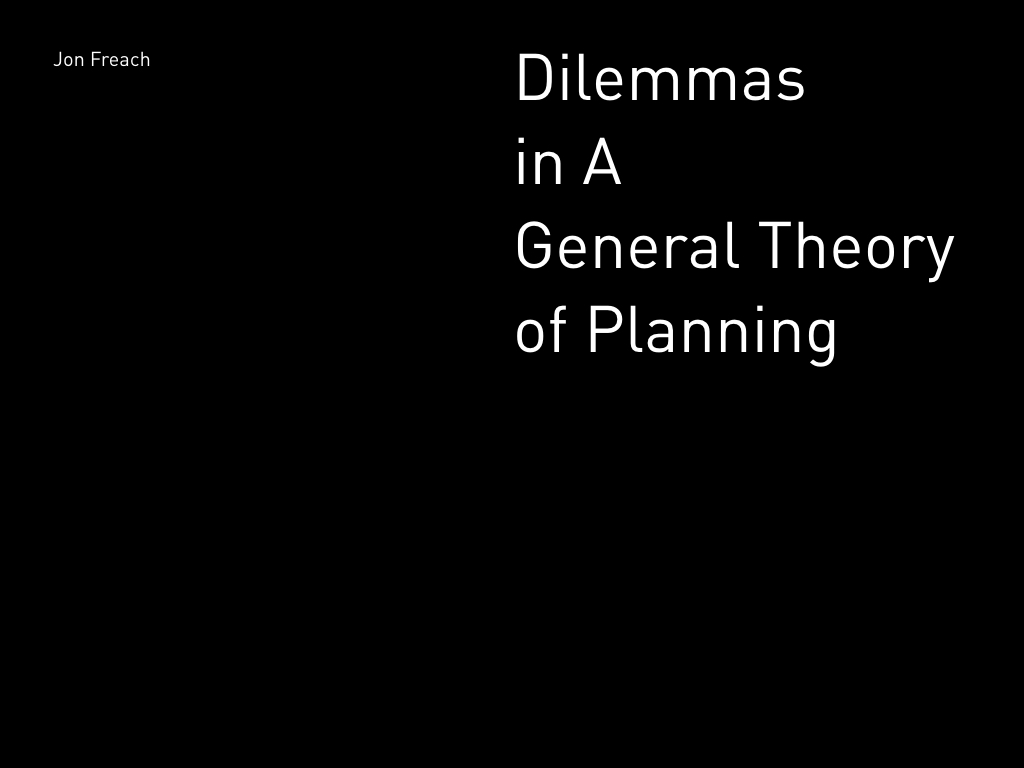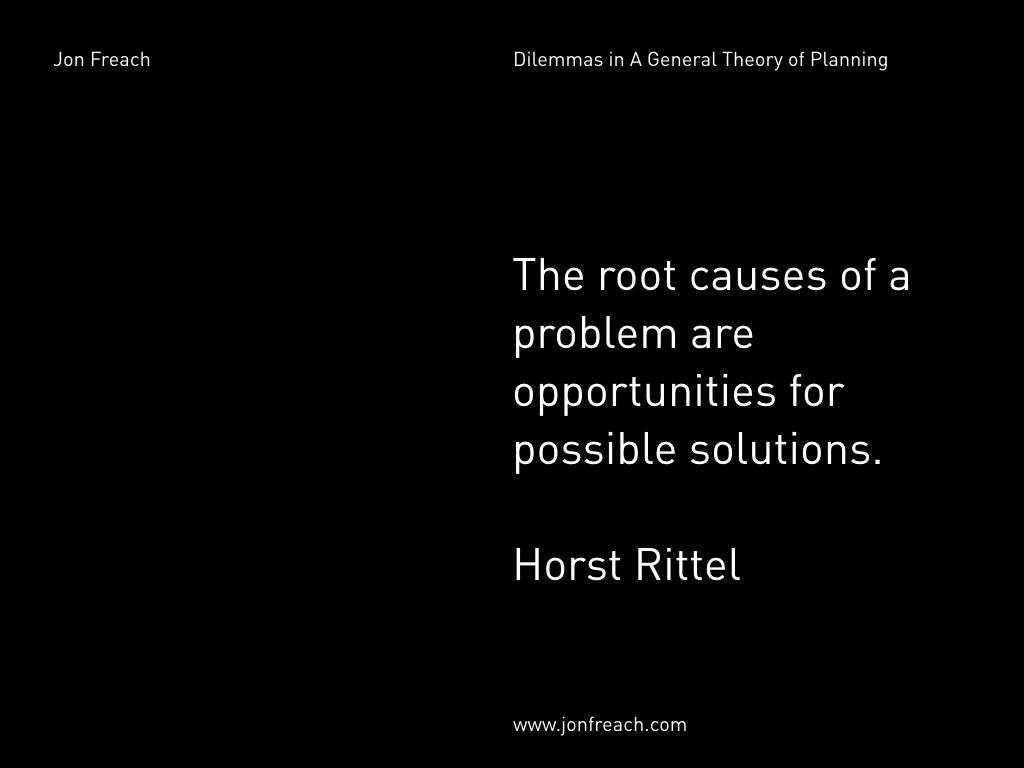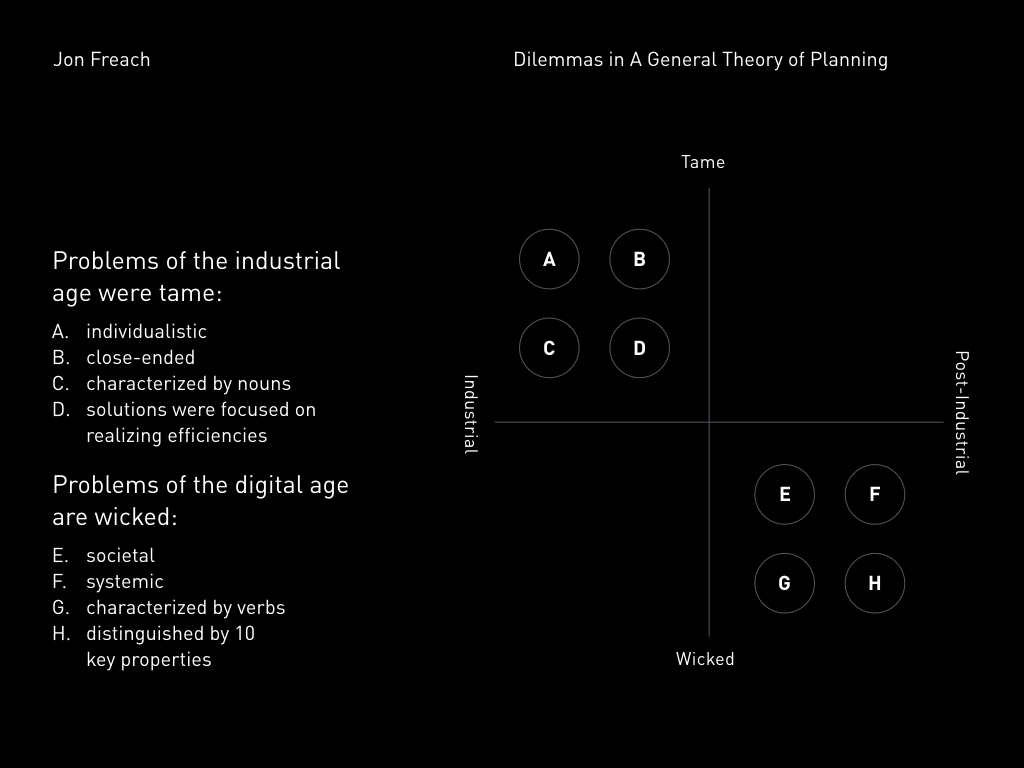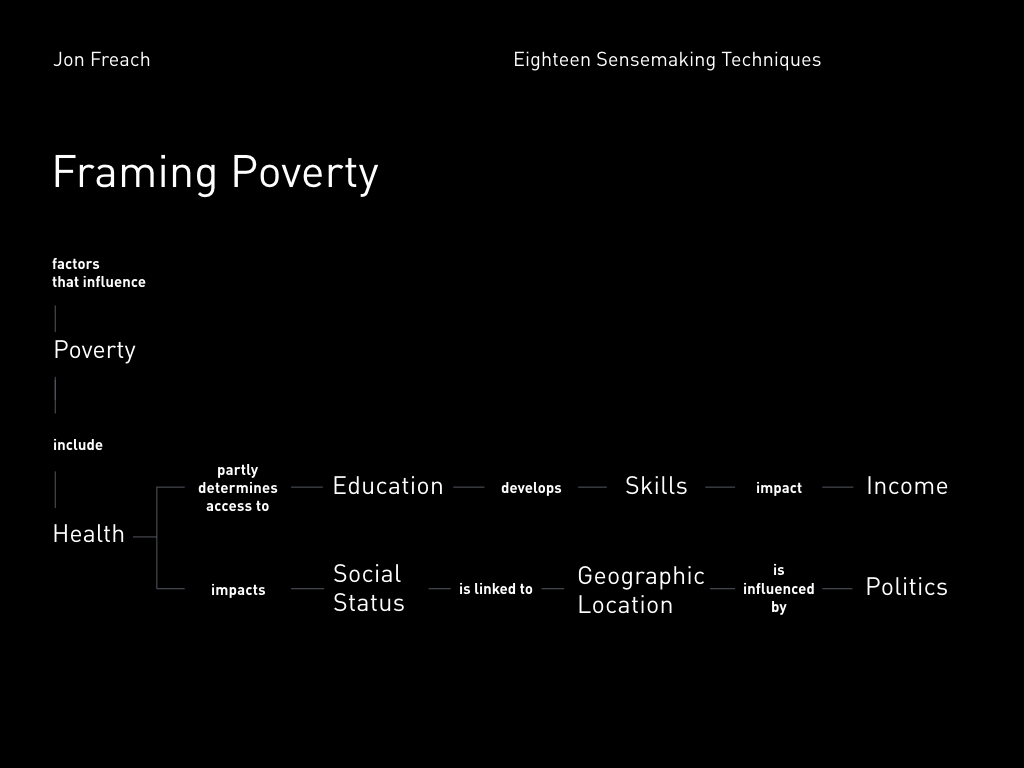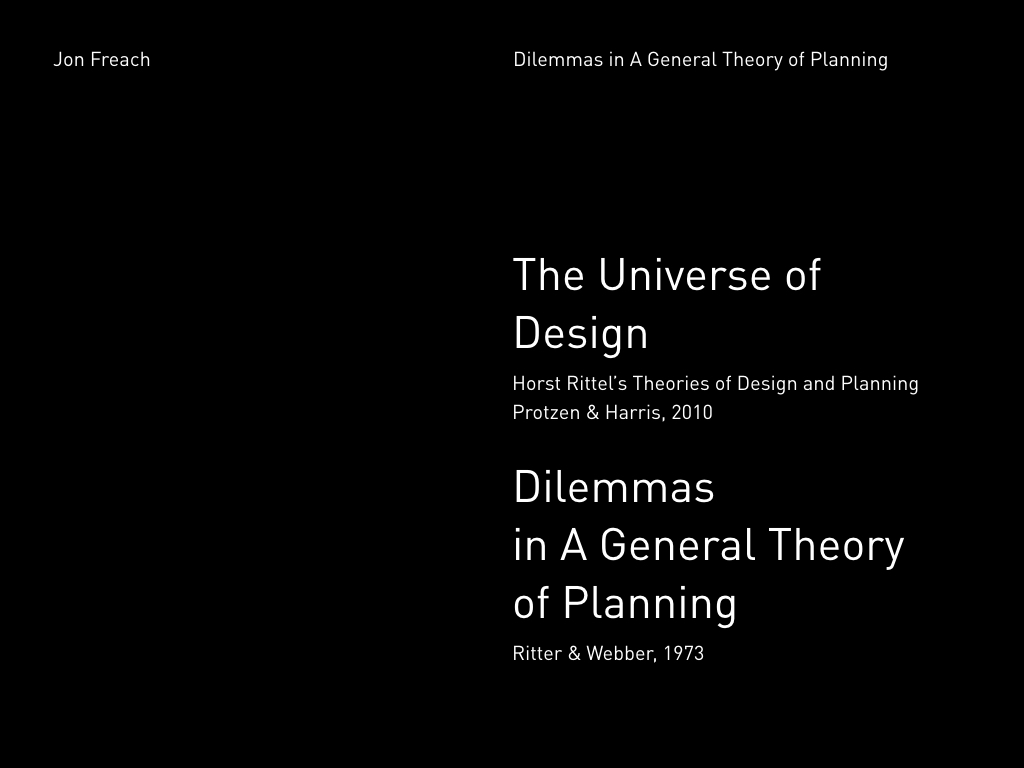By now a classic in the field of design thinking and methods, Rittel and Webber’s paper reframed what a modern problem was in 1973 and how the emerging profession of the Planner should anticipate them in the years to come. The authors juxtapose the social and cultural values of the Industrial and Post-Industrial ages, and how they shaped the stance and intent of the scientists, engineers, and policy makers responsible for tackling the problems of the day.
Pre/Industrial age problems were viewed in terms of cause and effect, efficiency, and being solvable, and therefore “tame”. Value frameworks were influenced by more homogenous ways of life and aspirations. Understanding systems meant learning what they were made of (nouns).
The Post-Industrial age shifted the paradigm of a problem. Homogeneity gave way to diversity. Designing systems meant asking what could or should they actually do (verbs). The new category of problems were societal, their centers elusive, their end-states unsolvable, their nature “wicked”. Value systems were complicated and contradictory; what was a solution for one led to a problem for another. A modern example: a homeless center provides a commonspace and shelter for a community in need, but it clashes with the ambience of popular nightspots downtown, negatively impacting their business.
The authors define ten properties of the new wicked problems:
- There is no definitive formulation of a wicked problem.
- Wicked problems have no stopping rule.
- Solutions are not true-or-false, but good-or-bad.
- There is no immediate or ultimate test of a solution.
- Every solution is a “one-shot operation”.
- Wicked problems don’t have an enumerable set of potential solutions.
- Every wicked problem is essentially unique.
- Every wicked problem can be considered to be a symptom of another problem.
- Discrepancy can be explained numerous ways.
- The planner has no right to be wrong.
